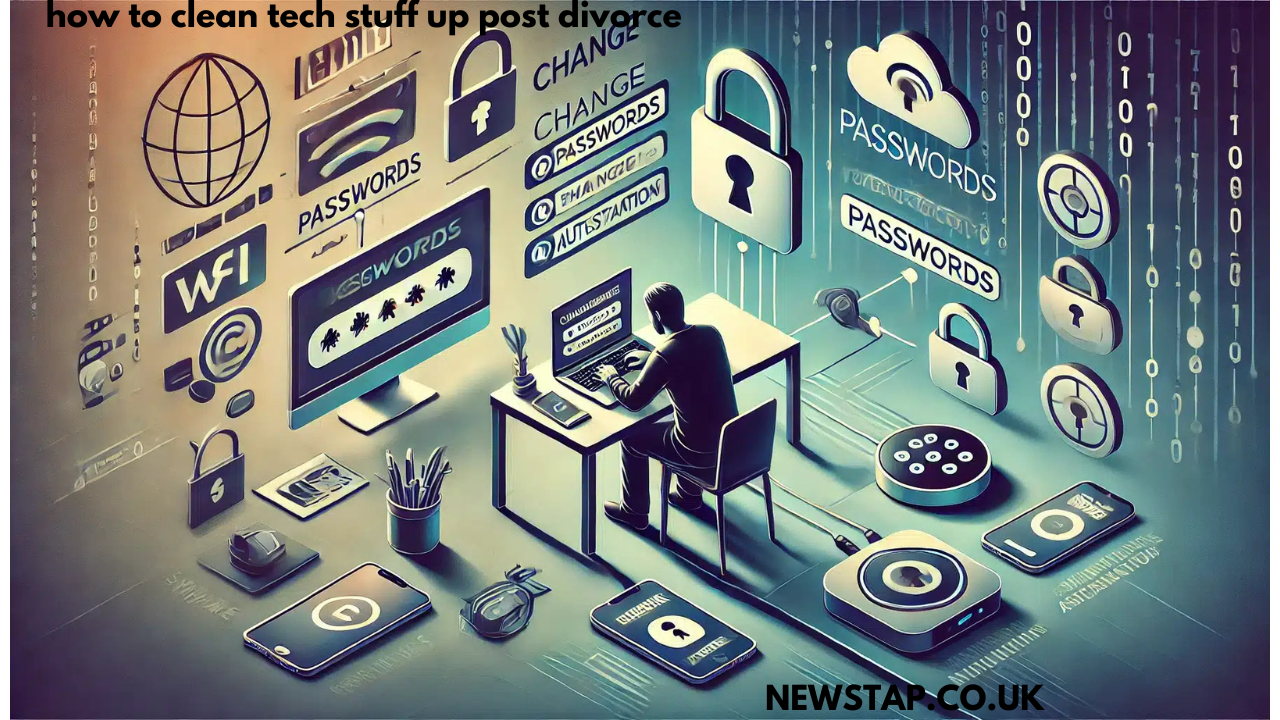Introduction
Going through a divorce is emotionally and mentally exhausting. Apart from dealing with personal belongings, finances, and emotions, another often-overlooked aspect is cleaning up your tech stuff post-divorce. Digital devices—phones, laptops, tablets, smart home devices, cloud storage, and social media accounts—hold an array of personal information, including texts, emails, photos, passwords, and much more. When a relationship ends, it’s crucial to ensure that these digital platforms are secured, cleaned, and properly separated. This article will provide you with a detailed, step-by-step guide on how to clean tech stuff up post-divorce, ensuring privacy, safety, and peace of mind.
1. Back-Up Your Data
Before diving into cleaning your devices, it’s essential to back up your personal data. Divorce can be stressful, and it’s always better to be prepared and safeguard your valuable memories and documents. Make sure to back up important data on external hard drives, cloud services, or both to ensure you don’t lose anything valuable during the process of cleaning up your tech devices.
What to back up:
- Photos and videos
- Important documents (financial statements, work-related files, legal paperwork)
- Contact information (phone numbers, email addresses)
- Emails and chats
- Notes and calendars
- Music or any personal media
Backing up your data ensures that, even if something gets deleted by mistake or on purpose, you can retrieve your data later. Make sure you store this backup somewhere secure, as it contains highly sensitive information.
2. Secure Your Accounts: Passwords and Security Measures
A critical part of cleaning up your tech stuff post-divorce is securing your online accounts and passwords. Whether it’s your email, social media profiles, banking, or subscription services, ensuring that no one else has access to your accounts is crucial.
Steps to secure your accounts:
- Change passwords: The first thing to do is change passwords for any shared accounts. This includes email, financial accounts, and any accounts you had with your ex-spouse.
- Two-factor authentication (2FA): Set up two-factor authentication (2FA) wherever possible. This adds an extra layer of security and makes it harder for unauthorized people to gain access to your accounts.
- Account audit: Conduct a thorough audit of your online presence. Check if there are any accounts linked to your ex-spouse or if you share passwords for any joint accounts (Netflix, Amazon, etc.). Update these shared details or remove your ex’s access to any shared subscriptions.
- Remove old devices: From your accounts, make sure to remove any devices that you no longer use or that belong to your ex-spouse. This ensures they can’t access your accounts from those devices.
3. Clear Browsing History and Personal Data
Your web browser contains a lot of personal information, from saved passwords to browsing history. It’s essential to clear this data after a divorce to protect your privacy.
How to clear browsing history and personal data:
- Clear browsing history: Go to your browser’s settings and clear the history, cookies, cache, and download history. This removes traces of your online activities.
- Delete saved passwords: Many browsers offer to save passwords for quick login. Review these saved passwords and remove anything that’s connected to your ex-spouse.
- Clear autofill data: Browsers store autofill data such as addresses, credit card numbers, and phone numbers. Make sure this is wiped clean to avoid any accidental sharing of sensitive information.
- Delete browser extensions: Check for any extensions or add-ons that you may have added during your relationship and delete any that are unnecessary.
4. Disconnect Devices and Apps Linked to Your Accounts
Another crucial step is to disconnect any devices, apps, or services linked to your accounts that you no longer want associated with your ex-spouse. If you and your ex shared devices like smartphones or tablets, it’s vital to disassociate them from your personal accounts.
Steps to disconnect devices:
- Sign out of apps: For apps like social media platforms, messaging apps, or photo-sharing services, ensure you are logged out from any shared or mutual devices.
- Unlink accounts: Review all apps and services that are connected to your email and social media accounts. For instance, if you use your Facebook to log into third-party apps like Spotify or Instagram, it’s time to unlink those services.
- Check your phone’s cloud settings: Many smartphones are linked to cloud services such as iCloud or Google Drive. Ensure that your ex-spouse no longer has access to your cloud backups or shared services, especially photos, calendars, and other personal data.
5. Wipe Data from Shared Devices
Shared devices are a potential risk after a divorce. Laptops, phones, and tablets that were previously used by both parties need to be wiped clean to prevent access to any personal information or digital assets that could be used against you or inappropriately accessed.
Steps to wipe shared devices:
- Factory reset: For phones, tablets, and computers, perform a factory reset. This will erase all data from the device, ensuring no one can retrieve your personal information. Make sure to back up any information you need before proceeding.
- Remove SIM cards and SD cards: If your devices use SIM cards or SD cards, remove them before handing over the devices or resetting them.
- Check for residual data: Even after performing a factory reset, some devices may still retain data. Consider using data-wiping software that ensures all personal data is thoroughly erased.
6. Social Media Cleanup
Social media can be an emotional rollercoaster during and after a divorce. You may need to clean up your social media presence, including de-linking any shared profiles and removing or archiving posts that may have sentimental value or cause unnecessary tension.
Steps to clean up your social media accounts:
- Review friends and followers: Go through your friends list on platforms like Facebook, Instagram, Twitter, or LinkedIn and remove any connections that you no longer wish to maintain.
- Change privacy settings: Adjust the privacy settings on your accounts so that only trusted friends and family can see your posts. You may also want to take a break from social media while you process your emotions post-divorce.
- Remove shared content: Go through your old posts, photos, and shared content and remove or archive anything that references your ex or may be sensitive.
- Update relationship status: Update your relationship status on Facebook and other platforms, if applicable, to reflect your new reality.
7. Update Financial and Legal Information
Your financial information is critical, especially if you have joint accounts, credit cards, or shared financial assets with your ex-spouse. Clean up your financial tech stuff by ensuring that your financial accounts are secure and updated.
Steps to update financial information:
- Update joint accounts: If you shared any financial accounts, change passwords, and remove your ex from access. You may also want to separate any joint accounts and set up new ones in your name alone.
- Notify your bank and credit card providers: Let your bank or credit card company know about the change in your personal circumstances. Consider freezing or closing joint accounts if necessary.
- Monitor credit reports: Keep an eye on your credit reports for any unusual activity or changes that may occur post-divorce.
8. Consider Hiring a Digital Security Expert
If you feel overwhelmed or unsure about securing your digital presence post-divorce, it may be worth considering hiring a digital security expert. A professional can assist you in thoroughly cleaning up your digital footprint, securing accounts, and preventing future breaches.
Conclusion
Cleaning up tech stuff post-divorce is an essential step in regaining control over your personal life and digital privacy. By following the steps outlined in this guide—securing your accounts, wiping shared devices, and cleaning up your social media—you can ensure a smooth transition to your new life post-divorce. Although it may seem like a tedious process, taking the time to safeguard your personal information and digital assets will provide you with peace of mind during this transitional period



